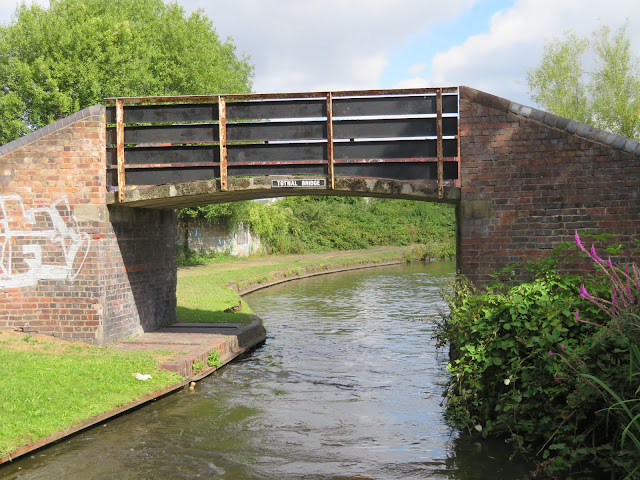I had a chat first thing with a couple of boaters that had moored up astern of us for a cup of tea this morning. They were from Hawne Basin where we were heading too. We let them go first so as not to hold them up and did a bit of a litter pick before setting off.
As we approached Windmill End Junction, Netherton tunnel is straight. The canal we are on was built new for access to the tunnel. It cut off the loops of the old Dudley No.2 Canal that went off to the right to the Worcester and Birmingham Canal at Selly Oak through the Lapal Tunnel.
This is the Boshboil Arm that has been cut off from the rest of old loop, the Bumble Hole Arm
Once through the bridge there is a little arm that may well have served the Windmill End Colliery and one of the many Breeze ovens. Breeze was the very small pieces of coal, less than 12mm, that were used to sinter iron ore before being used to make wrought iron.
The remains of a toll island sits in the middle of the canal where the traffic was regulated and charged the appropriate fee to the Canal Company.
A little further on is another basin, on the right of the basin was the No.1 pit of the Warren's Hall Colliery and to the left was an inclined plane that led from No.2 pit of the colliery. On the opposite side of the canal was Windmill End Station. The railway line crossed by the tow path bridge at the start of the arm but has been removed.
Doulton Bridge originally led into a basin for brick and tile works. On the opposite side of the canal was the Birmingham Pottery works that also had two arms off the canal. They also served Hyatt's Colliery too. By about 1938 the brickworks had been taken over by the pottery and in the end became important for manufacture of sanitary wear, bowls, bogs and baths, and became Doulton's.
This building was the toll office at Rowley Stop. The narrowing of the canal enabled them to check the boats as they passed to keep track of the destinations and cargoes. Just after the stop the canal widens on the off side and this was where another inclined plane brought coal down from Pennant Hill Colliery. On the tow path side were two pits of the Gawn Colliery. There was a large basin for this colliery but no real sign of it survives.
Either side of Hollis's Bridge were basins leading into the Old Hill Ironworks. The one to the east survives. On the same side as the Iron Works was the Bluebell Pit and on the opposite side was Pearson's Colliery.
Between Hollis's and Totnal Bridges there was plenty of industry. There were limekilns and saw mills before Powkelane Bridge. There was the Tigar Chain Works on the off side along with a little arm that was for loading coal from an inclined plane from a distant pit. On the towpath was a gas works that I supose used the coal from the large Fly Colliery that had its own loading arm, next to a larger arm that was fed by a railway from more distant pits, and probably the Old Hall and Garret's Lane pits. There was an arm to the Eagle Colliery on the off side,that was abandoned in the early 1900's, and another arm to the Old Lion that was abandoned about the same time. It is no wonder the bridge was built simply to allow it to be raised when subsidence occurred.
A trip down this canal would have been very different before WWII and would have given the traveler a fantastic idea of the might of Britain's manufacturing output and the wealth that was generated, but also the poor conditions, at least as compared to today that it.









No comments:
Post a Comment